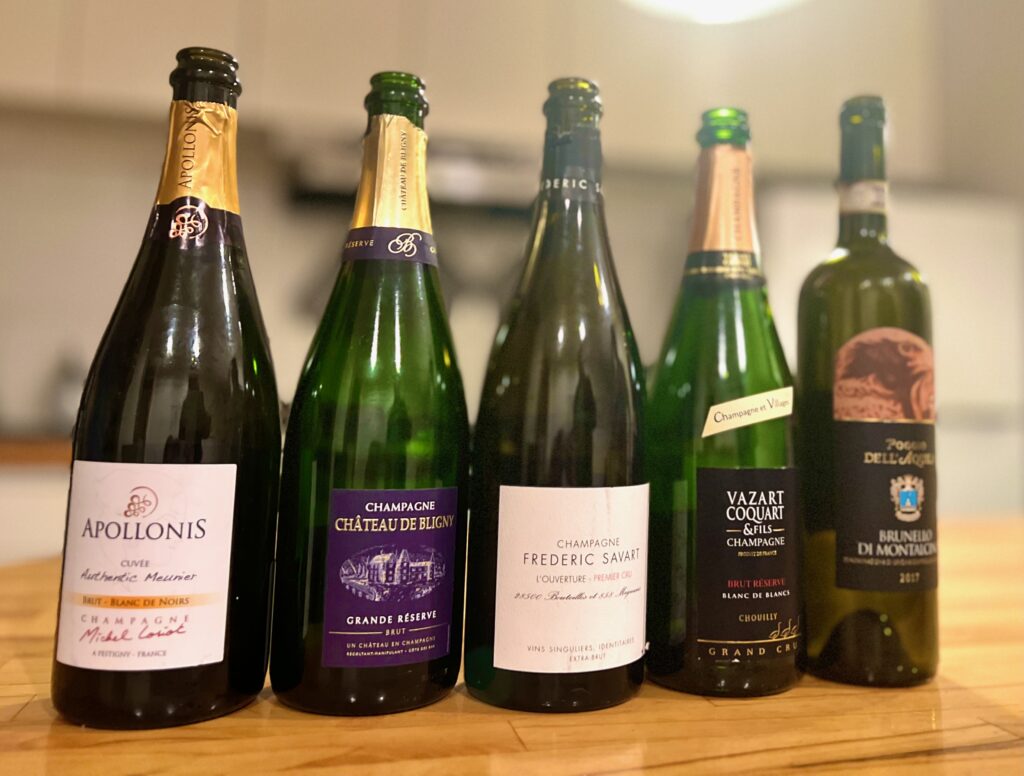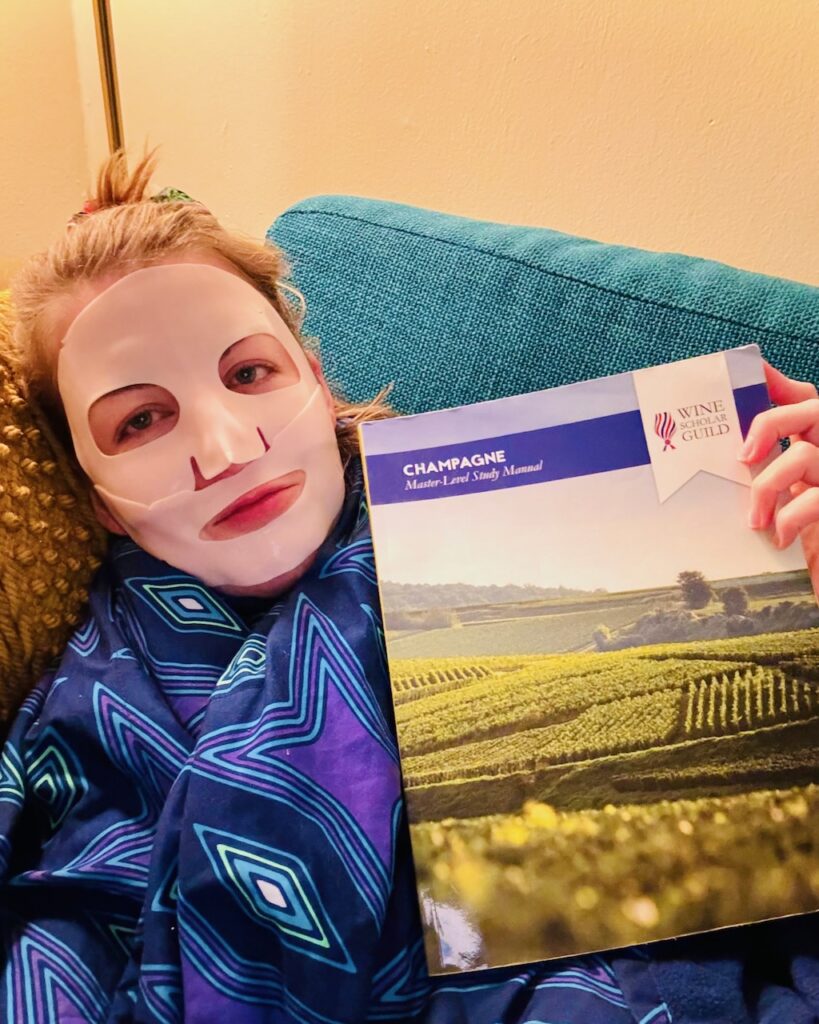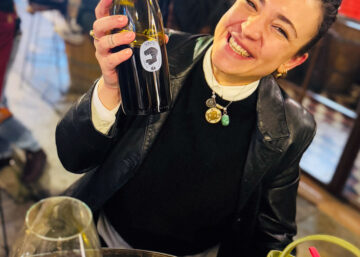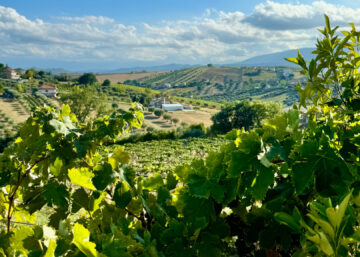Cheers! I’m a Champagne Master!
Since receiving my Champagne Master-Level Certificate less than two weeks ago, it’s been one beautifully bubbly ride. I’ve never sipped finer!
I had the honor of meeting and learning from the greats like Eric Rodez and Avize legends:, Pascal and Amboise Agrapart. I fangirled Peter Liem. I had two glasses of Krug! But most importantly, I’ve never loved Champagne more.
I’ll post regularly about my Champagne Master journey here, so stay tuned!
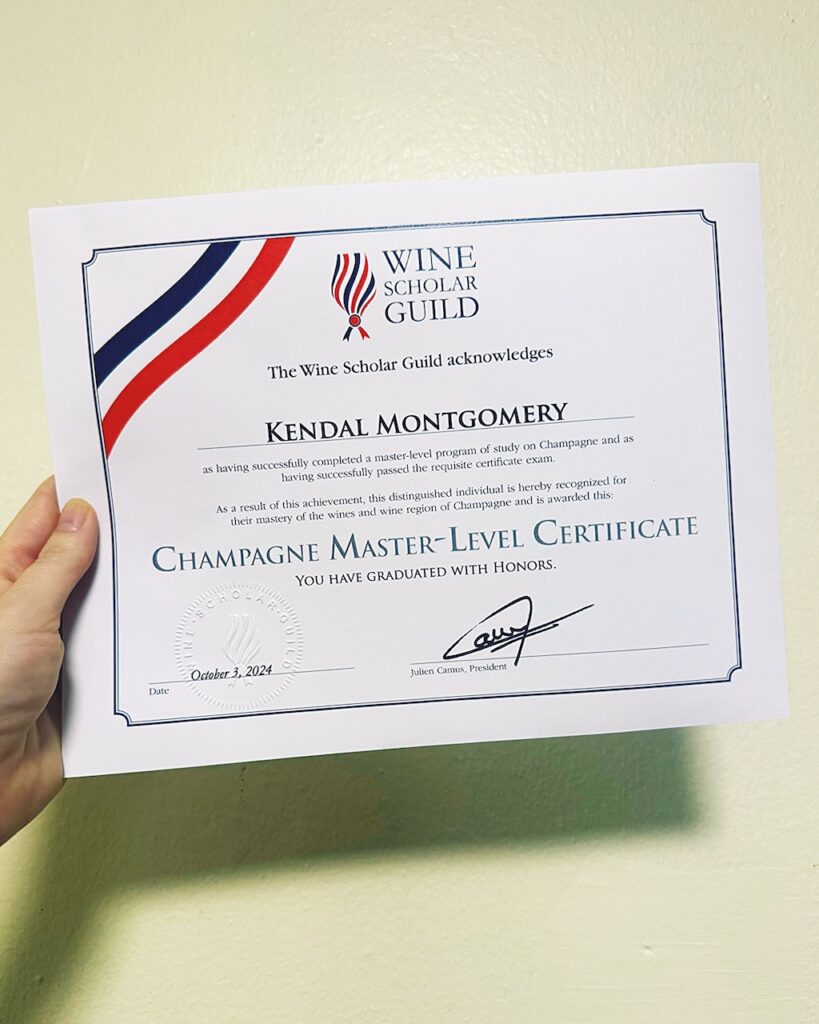
Champagne fascinates me…the liquid, the region, the people. Considering the area’s climate and long, convoluted history, a bottle of Champagne proves that our greatest accomplishments are born from adversity and necessity.
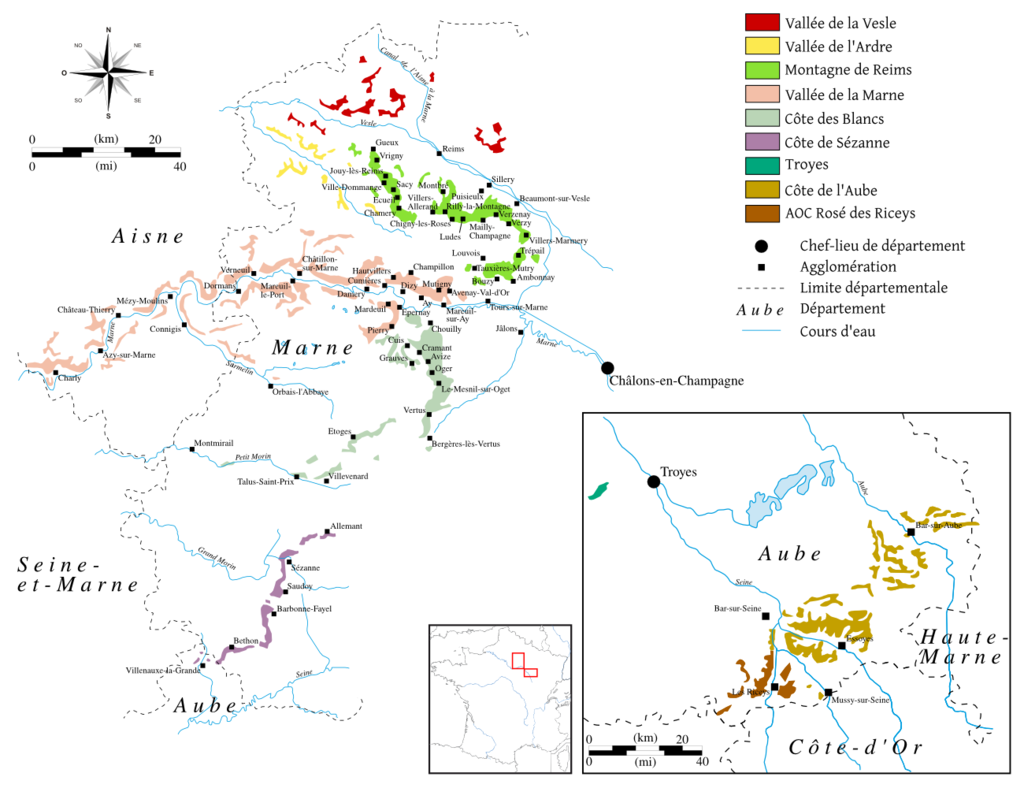
The area of Champagne lies at the northernmost limit of viable viticulture, between the latitudes of 49° and 49.5°N. It receives just enough sun and warmth to grow grapes worthy of Champagne’s reputation—though climate change is keeping us on our toes.
The region has produced wine for at least 1,500 years and is the epicenter of several historical events in Europe, from crowning kings to brutal, bloody battles. Nearly one-third of the course book is dedicated to outlining Champagne’s history. Here are two of my biggest takeaways:
- Though Dom Pérignon was very influential in Champagne and French wine production, we have no evidence that he knew much about sparkling wine. Bro spent most of his career trying to prevent second fermentations, focused on improving the onion-skin colored still wines the area was famous for during his time. So, props to you, Moët & Chandon, for proliferating one of the wine world’s greatest myths.
- Still wine accounted for more than 90 percent of production by the end of the 18th century, so considering its timeline, Champagne’s bubbly fame is rather recent.
The Wine Scholar Guild Master of Champagne program is very oriented toward self-study. We met once a month virtually to discuss the assigned unit, and there was an online forum that some used more than others, but you need a lot of self-discipline to get through this one. I also recommend having a solid local study buddy to keep you on track and offset the high costs of studying Champagne. Though the exam has no tasting component, I believe that tasting the suggested wines and going through the guided tastings with Essie is essential to getting the most out of this program and owning the title.
I have Nick Setterberg to thank for me taking and passing this course. After an afternoon of great wine in Central Park, he convinced me to sign up and spearheaded our studies thereafter—organizing an Excel, curating the wines, etc. Our first session focused on history and understanding Champagne’s main varieties on a single-variety level.
There are seven permitted varieties in Champagne, but Chardonnay, Meunier, and Pinot Noir account for more than 99 percent of all production. The other four are Arbanne, Pinot Blanc, Pinot Gris, and Petit Meslier.
CHARDONNAY
We popped the Vazart Coquart & Fils Chouilly Blanc de Blancs Brut Reserve to contemplate this grand grape. There is a lot to say about this wine—from its privileged Côte des Blancs location and Chouilly Grand Cru status, to its use of a perpetual reserve dating back to 1982—but I’ll stick to what we set out to decipher: Chardonnay.
Chardonnay provides purity, creating elegant wines with the longest aging potential in Champagne. An indigenous cross between Pinot and Gouais, Chardonnay is a high-yielding vine that won’t lose quality at the hands of an experienced grower. Particular tasting notes include apple, citrus, toast and minerality. In blends, it also contributes acid and alcohol. Peter Liem taught me to appreciate Chardonnay for its texture, for creating wines of breadth and depth.
For this particular bottle of 100% Chardonnay with partial MLF, no oak, and 4.5 g/l dosage, I noted golden raisins and white flowers sprinkled on salty, buttery crackers.
MEUNIER
Next was the Apollonis Authenic Meunier Brut. We’re seeing more and more Blanc de Noirs made from 100 percent Meunier and I’m not mad about it. Meunier, a.k.a. Pinot Meunier is how I learned the term “chimeric mutation,” where the cells of more than one genotype are found growing adjacent in the tissues of that plant, i.e. a variegated plant. DNA testing has confirmed that Meunier is part Pinot (internally) and part something else (on the epidermis).
Meunier is a friendly grape. It grows well on all soils, is frost- and freeze-resistant, and has fruitful secondary buds to compensate in case of a devastating frost. It’s the most fruit-forward of the trifecta. When I feel a very round and red mouth, I have dared to and correctly called a Champagne “Meunier-dominant.” I also look for notes of burnt sugar without sweetness. Meunier contributes a touch of acid and bright red earthy fruits to a blend and has the least amount of alcohol.
The Apollonis was the flabbiest of this tasting. It was a little too fruity for my taste, lacking that sharp, driven acidity I so love in a great Champagne.
PINOT NOIR
And then, Pinot Noir…
Fred Savart is now a go-to on my list of producers that I love, starting with his Premier Cru Extra Brut L’Ouverture made from 100 percent Pinot Noir. Pinot Noir is depth and complexity. For me, it generally has clear notes of red apple skin and red raspberries, and more often than not, is simply stunning. Of the top three, Pinot Noir contributes the least amount of acidity to a blend and has moderate alcohol. It prefers stony and chalky soils and is a fussy one to grow.
I was blown away by the cherry blossom in this particular nose, something I’ve since sought in other Blanc de Noirs from Pinot. The mousse is creamy and long, my favorite of the flight. Also interesting, is that the second fermentation of this bottle was under cork, not a screw cap, so expect soft complexity for the price.
BLENDS
Because this was the kick-off to our Champagne Master journey, we tasted a fourth bottle, a blend of 50 percent Chardonnay and 50 percent Pinot Noir, the Château de Bligny Brut Grande Réserve. To be Grande Réserve, the wine must be set apart from the producer’s reserve wine program and aged for five years, two of which in oak. With lemon curds, nectarines and creamy bubbles, this was a lovely way to end the night…well, then there was a 2017 Poggio Dell’Aquila Brunello di Montalcino…
It was a good, educational night.
Stay tuned for lots more Champagne content!
